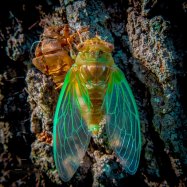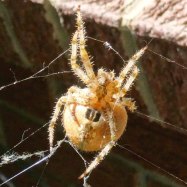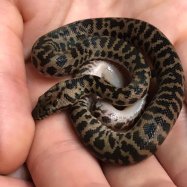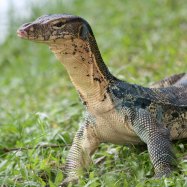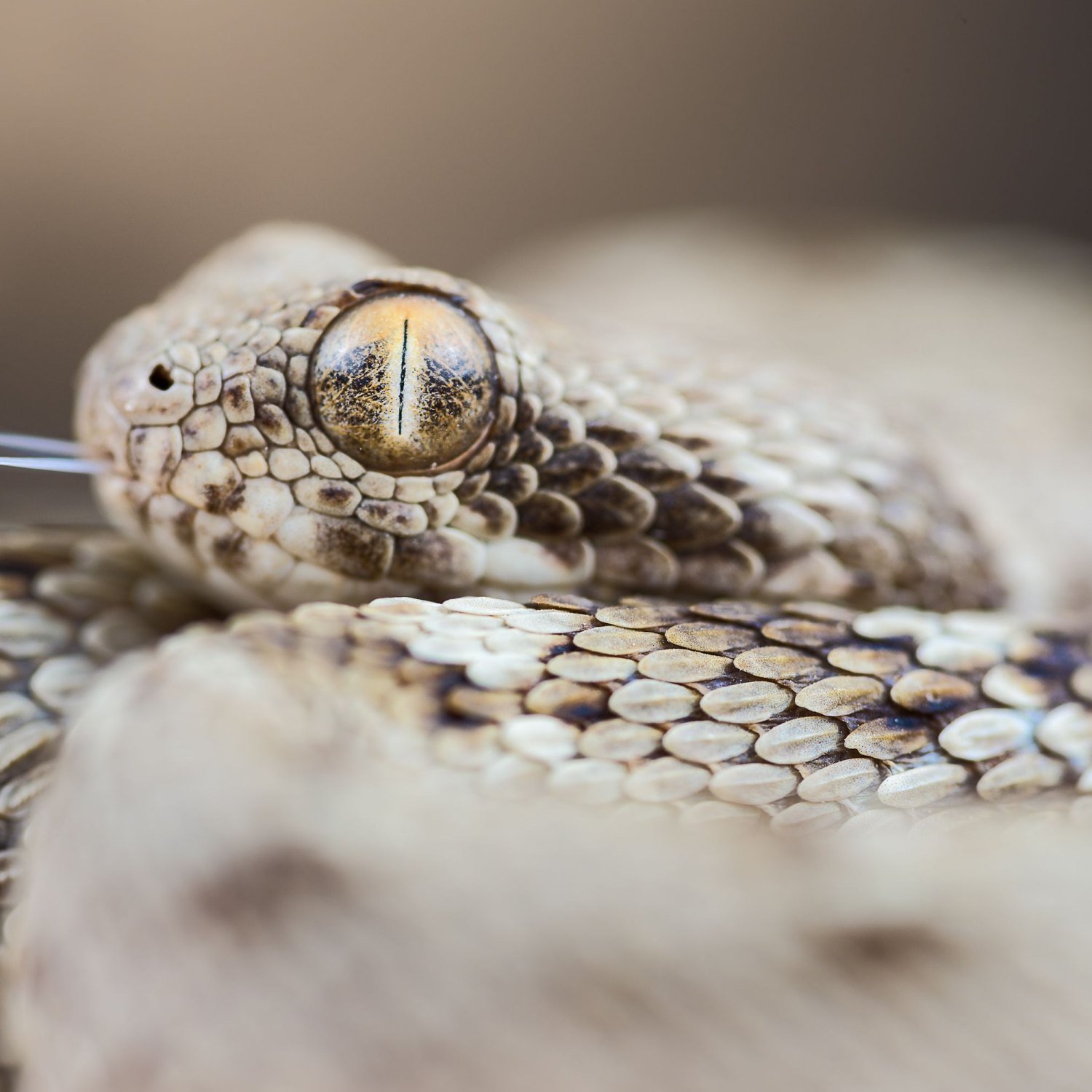
Saw Scaled Viper
About 50-60 cm
Saw scaled vipers are highly dangerous snakes found in Asia and Africa, known for their lethal venom and distinctive saw-like scales. These vipers are about 50-60 cm long and have a slender, cylindrical body shape. They belong to the Viperidae family and can be identified by their triangular head and sharp fangs. Stay cautious and avoid any encounters with this deadly creature.
Animal Details Summary:
Common Name: Saw Scaled Viper
Kingdom: Animalia
Habitat: Deserts, savannas, scrublands
The Fierce and Deadly Saw Scaled Viper: A Closer Look at One of Nature's Most Feared Creatures
Hidden away in the deserts, savannas, and scrublands of Africa, the Middle East, Central Asia, and India, lies a creature that strikes fear in the hearts of many - the Saw Scaled Viper. With its scientific name Echis carinatus and its common name, this snake is not one to be taken lightly. Let's take a deeper look into the features of this fascinating yet deadly animal and learn more about its habitat, characteristics, and behavior.Classified as a Reptile
The Saw Scaled Viper belongs to the Animalia kingdom, which encompasses all living organisms that are multi-cellular, eukaryotic, and heterotrophic Saw Scaled Viper. Within this kingdom, it belongs to the Chordata phylum, which includes animals with a notochord, a dorsal hollow nerve cord, and gill slits during their development. As a reptile, the Saw Scaled Viper falls under the class Reptilia, which is characterized by their scaly skin, cold-blooded nature, and terrestrial habitat.A Member of the Viper Family
The Saw Scaled Viper is a part of the Viperidae family, known for its venomous snakes. Vipers have specialized fangs that can fold up against the roof of their mouth, allowing them to strike and deliver venom with great accuracy. The Saw Scaled Viper, in particular, has a triangular head and elliptical pupils, both of which are common characteristics of vipers.Found in Dry and Arid Environments
The Saw Scaled Viper is versatile when it comes to its habitat, making its home in dry and arid environments such as deserts, savannas, and scrublands. These snakes can also be found in rocky areas and crevices, seeking shelter from the scorching sun. This widespread distribution is one of the factors that contribute to their survival as it ensures a constant supply of prey and minimizes competition.Carnivorous by Nature
Feeding on small rodents, birds, lizards, and insects, the Saw Scaled Viper is a carnivore that uses its venom to immobilize and kill its prey Short Faced Bear. They are known to have a very diverse diet, and their ability to adapt to different environments allows them to feed on a variety of prey. These snakes are also nocturnal, preferring to hunt at night when their prey is more active.A Coloration That Blends In
The Saw Scaled Viper has a coloration that allows it to easily blend in with its surroundings. Ranging from pale sandy, yellowish-brown, reddish-brown, pale gray to black, the coloration of these snakes helps them camouflage against the desert sand and rocky terrain, making them difficult to spot. This natural camouflage is an essential survival tactic for these snakes as it helps them avoid predators and catch their prey by surprise.A Unique Body Shape
One of the distinguishing features of the Saw Scaled Viper is its body shape. Unlike other vipers, this snake has a slender and cylindrical body, which makes it easier for them to move through small crevices and rocky areas. Their movements are also quick and agile, allowing them to strike at their prey with lightning speed.Average Length of 50-60 cm
On average, Saw Scaled Vipers measure around 50-60 cm, with some specimens reaching up to 70 cm in length. Although not considered large in comparison to other snakes, they can still pack a potent punch with their venom and should be avoided at all costs.A Venomous Bite and Potent Neurotoxin
The Saw Scaled Viper is highly venomous, and its bite can be fatal if left untreated. They produce a potent neurotoxin that attacks the nervous system, causing paralysis and eventually respiratory failure. Their venom is also hemotoxic, meaning it destroys red blood cells and causes internal bleeding. If bitten by a Saw Scaled Viper, immediate medical attention is crucial to ensure survival.Survival Tactics of the Saw Scaled Viper
Aside from their natural camouflage, the Saw Scaled Viper has other survival tactics to protect themselves. When threatened, they will coil up and produce a loud hissing sound by rubbing their scales together, earning them the nickname "little saws." This behavior acts as a warning to predators and gives them a chance to escape. If the warning is ignored, the Saw Scaled Viper will not hesitate to strike and inject its venom.The Misconception of Country of Origin
One interesting fact about the Saw Scaled Viper is that although it is found in various countries, its country of origin is still unknown. This is because the widespread distribution of these snakes makes it difficult to determine where they first originated from. This also makes it challenging to track and study their populations, hindering conservation efforts for this species.The Importance of Understanding These Deadly Creatures
The Saw Scaled Viper is an essential part of the ecosystem, playing the role of a predator that helps control the population of small animals. These snakes are also indicators of the health of their habitat, as their presence or absence can signify changes in the environment. As with any other animal, it is vital to understand these creatures and their behavior to coexist peacefully and minimize any negative interactions.In Conclusion
In conclusion, the Saw Scaled Viper is a formidable creature that commands respect and awe. As a member of the Viperidae family, they possess unique characteristics that make them adaptable and successful in different environments. Their highly venomous bite makes them a predator to be feared, but it is also a survival tactic that has kept them alive through the centuries. As we continue to explore and discover nature's wonders, it is essential to maintain a healthy balance and respect for all living creatures, including the Saw Scaled Viper.

Saw Scaled Viper
Animal Details Saw Scaled Viper - Scientific Name: Echis carinatus
- Category: Animals S
- Scientific Name: Echis carinatus
- Common Name: Saw Scaled Viper
- Kingdom: Animalia
- Phylum: Chordata
- Class: Reptilia
- Order: Squamata
- Family: Viperidae
- Habitat: Deserts, savannas, scrublands
- Feeding Method: Carnivorous
- Geographical Distribution: Africa, Middle East, Central Asia, and India
- Country of Origin: N/A
- Location: N/A
- Animal Coloration: Pale sandy, yellowish-brown, reddish-brown, pale gray, or black
- Body Shape: Slender and cylindrical
- Length: About 50-60 cm
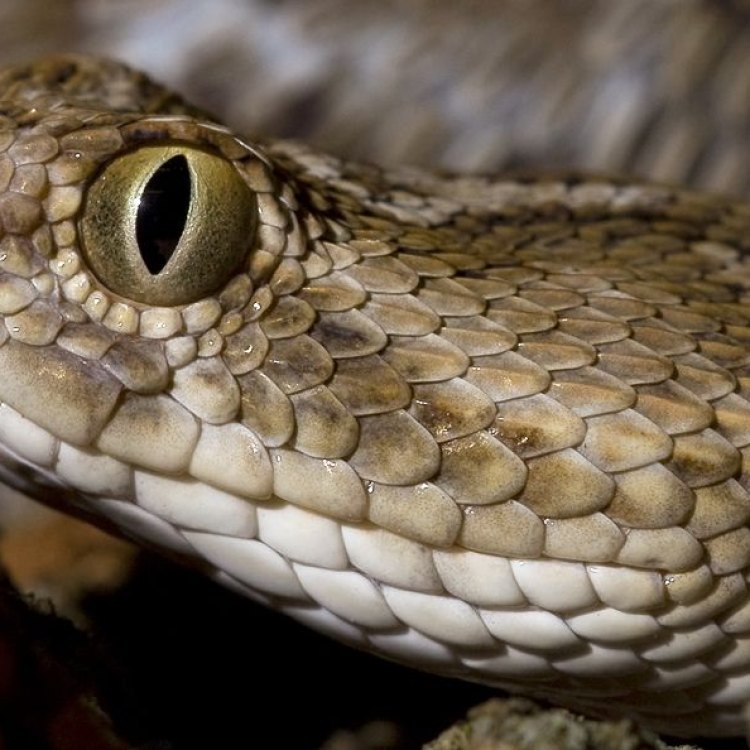
Saw Scaled Viper
- Adult Size: About 50-60 cm
- Average Lifespan: 10-20 years
- Reproduction: Reptiles
- Reproductive Behavior: Oviparous
- Sound or Call: Hissing sound
- Migration Pattern: Non-migratory
- Social Groups: Solitary
- Behavior: Nocturnal, secretive
- Threats: Habitat loss, human persecution, snakebite incidents
- Conservation Status: Not Evaluated
- Impact on Ecosystem: Plays a role in controlling rodent populations
- Human Use: Venom used in medical research and production of antivenom
- Distinctive Features: Distinct saw-like scales on its dorsal side
- Interesting Facts: Has a highly potent venom and is responsible for numerous snakebite incidents
- Predator: Birds of prey, mongooses, snakes
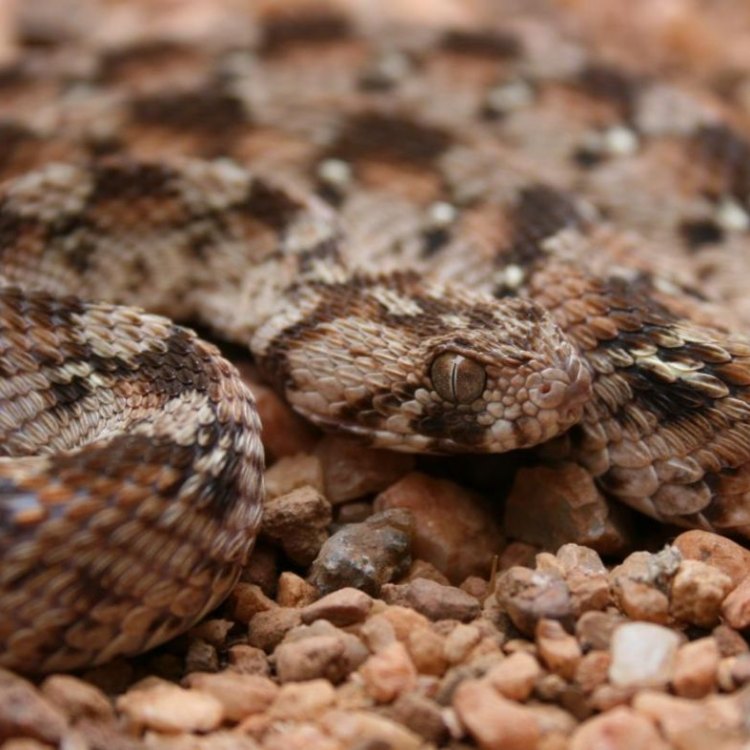
Echis carinatus
The Mysterious and Deadly Saw Scaled Viper: A Fascinating Look into the World of One of the Most Dangerous Snakes
The world is full of fascinating creatures, each with their own unique features and behaviors. One of these mesmerizing creatures is the Saw Scaled Viper, a snake with a reputation for being highly venomous and responsible for numerous snakebite incidents around the world.But beyond its fearsome reputation, the Saw Scaled Viper has many interesting traits and characteristics that make it a unique and intriguing species. From its distinctive saw-like scales to its role in controlling rodent populations, this snake is truly a marvel of nature PeaceOfAnimals.Com. In this article, we will explore the fascinating world of the Saw Scaled Viper, uncovering its behavior, threats, and role in the ecosystem.
A Closer Look at the Saw Scaled Viper
Native to the dry and arid regions of South Asia and the Middle East, the Saw Scaled Viper (scientific name: Echis carinatus) is a venomous snake that belongs to the Viperidae family. It is one of the smallest venomous snakes in the world, with adults reaching an average length of 50-60 cm. However, what it lacks in size, it makes up for in its highly potent venom.Distinctive Features
The Saw Scaled Viper is easily recognizable due to its distinctive saw-like scales on its dorsal side, which give it its name. These scales are small and sharp, giving the snake a rough and textured appearance. It is believed that these scales may help the snake in its camouflage, as they blend in with the surrounding environment of dry leaves and sand.Apart from its saw-like scales, another notable feature of this snake is its triangular-shaped head, a common characteristic of vipers. Its head is broad and triangular, with a pointed nose and large eyes with vertical pupils Supersaurus. Its body is also slender and cylindrical, with a short and narrow tail.
Behavior and Reproduction
The Saw Scaled Viper is a nocturnal and secretive snake, preferring to remain hidden during the day by burrowing in the ground or hiding under rocks. They are quite shy creatures and will often try to escape rather than defend themselves if confronted. However, when threatened, they can become highly aggressive and strike multiple times in rapid succession.Like most reptiles, the Saw Scaled Viper is oviparous, which means it lays eggs for reproduction. The females lay an average of 5-12 eggs in the dry season, and the hatchlings emerge after an incubation period of around 3 months. The young snakes are independent and do not receive any parental care.
Threats and Conservation Status
Unfortunately, the Saw Scaled Viper is facing many threats in its natural habitat, making its conservation status a cause for concern. One of the most significant threats to this species is habitat loss, due to human activities such as agriculture, urbanization, and development. This loss of habitat can lead to a decline in prey availability, resulting in a decrease in the snake's population.Furthermore, this snake also faces human persecution, as it is often killed out of fear or ignorance. In many parts of its range, the Saw Scaled Viper is considered a nuisance and is killed on sight. This human persecution, coupled with the high demand for its venom, has led to a significant decrease in its population.
However, despite these threats, the Saw Scaled Viper has not been evaluated for its conservation status by the IUCN Red List. More research and conservation efforts are needed to understand and protect this species adequately.
The Saw Scaled Viper's Impact on the Ecosystem
Like all creatures, the Saw Scaled Viper plays a crucial role in maintaining the balance of its ecosystem. Although it may be feared by humans, it is an essential predator in its habitat, primarily controlling rodent populations. With its highly potent venom, the Saw Scaled Viper can take down prey much larger than itself, making it a valuable asset in controlling rodent populations that can cause damage to crops and spread disease.Furthermore, the Saw Scaled Viper's venom is also used in medical research and the production of antivenom. The snake's venom possesses powerful hemolytic and coagulant properties, making it highly valuable in treating cases of snakebite.
However, it is vital to note that the venom of this snake is only beneficial in controlled and scientific settings. In the wrong hands, it can be lethal and has been misused for criminal purposes, such as murder and torture.
Interactions with Predators
Naturally, the Saw Scaled Viper's venom makes it a formidable predator, but it too has its own predators in the wild. Birds of prey, such as eagles and hawks, are known to prey on this snake, using their sharp talons to grab and kill them.Other predators of the Saw Scaled Viper include mongooses and other snakes. Mongooses are known for their speed and agility, making them a difficult target for the slow-moving viper. As for other snakes, they may also hunt and prey on the Saw Scaled Viper, using similar techniques to strike and inject venom.
Fascinating Facts about the Saw Scaled Viper
- The Saw Scaled Viper is one of the only snakes in the world to have irritable and grumpy behavior, making them quite unpredictable.- Its highly potent venom has a mortality rate of up to 89%, making it one of the deadliest snakes in the world.
- The species has many different subspecies, each with their own unique color and geographical distribution.
- Despite its fearsome reputation, the Saw Scaled Viper will often try to escape rather than defend itself, making it a shy and non-confrontational snake.
- It is also believed that this snake may be partly responsible for the spread of the Black Death during the Middle Ages, as its venom was used to kill rodents carrying the disease.
Conclusion
In conclusion, the Saw Scaled Viper is a truly fascinating and unique species. From its distinctive saw-like scales to its highly potent venom, this small but mighty snake is a marvel of its ecosystem. Despite facing many threats and misunderstandings, the Saw Scaled Viper plays a vital role in its habitat and deserves further study and conservation efforts to ensure its survival.Understanding and appreciating the importance of this species can help us coexist with them harmoniously, allowing us to appreciate their beauty and contributions to the natural world. Let us continue to marvel at the wonders of nature and strive to protect all creatures, including the mysterious and deadly Saw Scaled Viper.
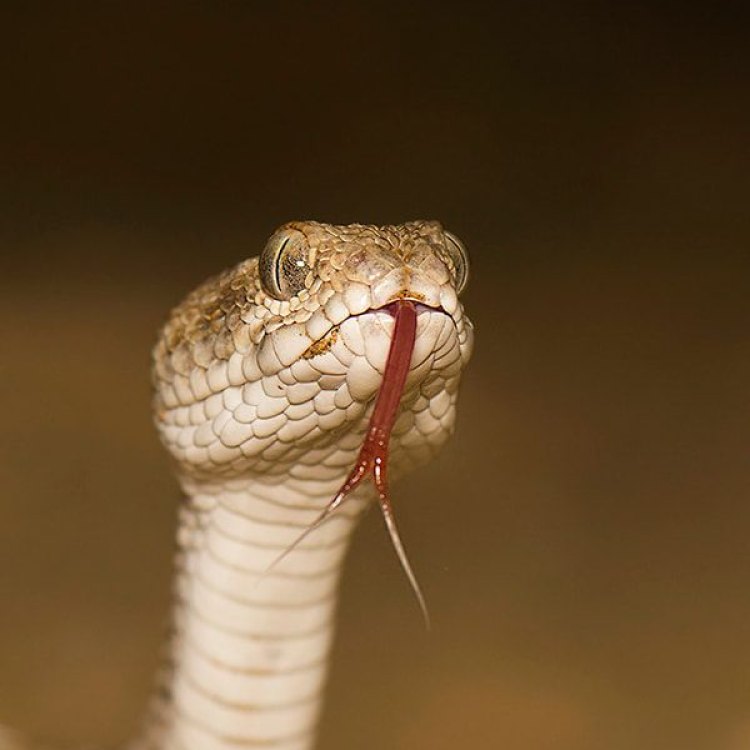
The Fierce and Deadly Saw Scaled Viper: A Closer Look at One of Nature's Most Feared Creatures
Disclaimer: The content provided is for informational purposes only. We cannot guarantee the accuracy of the information on this page 100%. All information provided here may change without prior notice.





